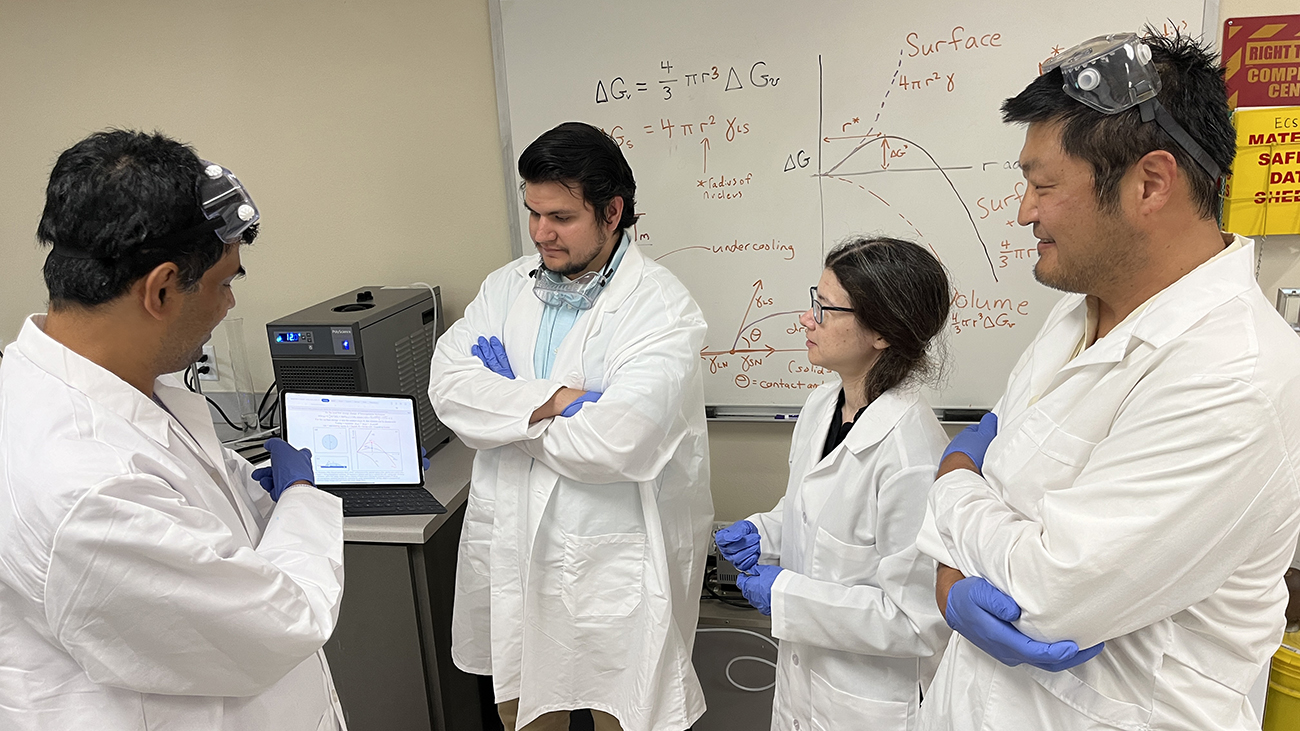- Featured
- Engineering
- Research
- Science
WT Adds New Equipment to Further Science Education in Engineering, Environment
Copy by Chip Chandler, 806-651-2124, cchandler@wtamu.edu
CANYON, Texas —West Texas A&M University researchers have acquired an essential new instrument that will enhance science education on campus and across the region.
Thanks to a $75,000 grant from the National Science Foundation, WT has purchased a state-of-the-art cold-stage instrument, which is used to study the solidification of liquids.
“We want to use the instrument for hands-on laboratory activities demonstrating how liquids transition into solids,” said Dr. Sanjoy Bhattacharia, assistant professor of mechanical engineering in the College of Engineering. “This process is essential to understand both material processing and ice formation in clouds. By taking part in the hands-on learning of experimentation, data analysis, scientific observation, technical writing and peer collaboration, students ultimately will be better educated and better prepared for the workforce.”
Material processing is the designing, developing and producing of new materials for real-world applications.
Bhattacharia, the principal investigator for the NSF grant, partnered with Dr. Naruki Hiranuma, associate professor of environmental sciences in WT’s Paul Engler College of Agriculture and Natural Sciences, and Dr. Asanga D. Ranasinghe, professor of physical sciences at Amarillo College.
Over the summer, Bhattacharia and his team will develop an education module designed to teach WT students in engineering and environmental science classes representing both of the WT Colleges. They’ll also develop outreach activities for use at Amarillo College.
WT researchers—both students and faculty—have conducted studies in Alaska, Norway, the Azores, Northeast Oklahoma and the Canyon area as part of international research campaigns that are examining ice-nucleating particles, which are the microscopic material in the air that water vapor condenses around to form ice crystals that make up clouds.
“Multidisciplinary research is key to expose students to multiple STEM fields and develop their marketable skills for real-world applications,” Hiranuma said. "With this funding, we wish to foster a master of everything in STEM education and train our students to earn meaningful skills that are applicable to their future career development".
Meeting area needs as a Regional Research University is the primary goal of the University’s long-range plan, WT 125: From the Panhandle to the World.
That plan is fueled by the historic One West comprehensive fundraising campaign, which reached its initial $125 million goal 18 months after publicly launching in September 2021. The campaign’s new goal is to reach $175 million by 2025; currently, it has raised nearly $160 million.
About West Texas A&M University
WT is located in Canyon, Texas, on a 342-acre residential campus. Established in 1910, the University has been part of The Texas A&M University System since 1990. WT, a Hispanic Serving Institution since 2016, boasts an enrollment of about 10,000 and offers 59 undergraduate degree programs and more than 40 graduate degrees, including two doctoral degrees. The University is also home to the Panhandle-Plains Historical Museum, the largest history museum in the state and the home of one of the Southwest’s finest art collections. The Buffaloes are a member of the NCAA Division II Lone Star Conference and offers 14 men’s and women’s athletics programs.
Photo: Sarah Petters, second from right, of University of California–Riverside helps West Texas A&M University set up a new cold-stage instrument following a $75,000 grant from the National Science Foundation. Also pictured are, from left, Dr. Sanjoy Bhattacharia, research assistant Alexander Hernandez and Dr. Naruki Hiranuma.
—WT—

